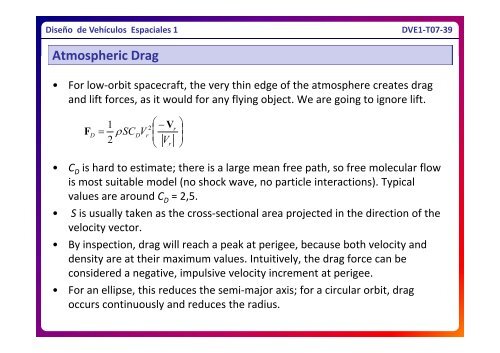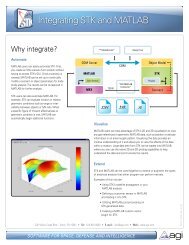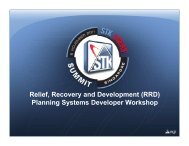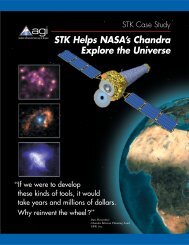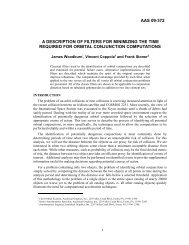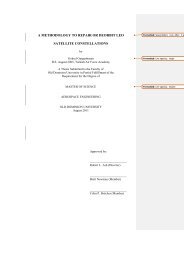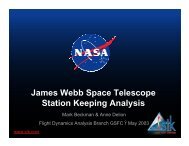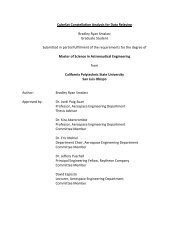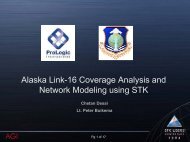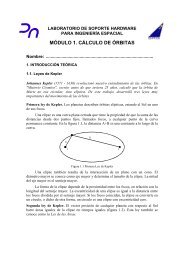Orbits and Propagators - AGI
Orbits and Propagators - AGI
Orbits and Propagators - AGI
- No tags were found...
Create successful ePaper yourself
Turn your PDF publications into a flip-book with our unique Google optimized e-Paper software.
Diseño de Vehículos Espaciales 1DVE1‐T07‐39Atmospheric Drag• For low‐orbit spacecraft, the very thin edge of the atmosphere creates drag<strong>and</strong> lift forces, as it would for any flying object. We are going to ignore lift.FD1 SC2 DV2r VVrr• C D is hard to estimate; there is a large mean free path, so free molecular flowis most suitable model (no shock wave, no particle interactions). Typicalvalues are around C D = 2,5.• S is usually taken as the cross‐sectionalsectional area projected in the direction of thevelocity vector.• By inspection, drag will reach a peak at perigee, because both velocity <strong>and</strong>density are at their maximum values. Intuitively, the drag force can beconsidered a negative, impulsive velocity increment at perigee.• For an ellipse, this reduces the semi‐major axis; for a circular orbit, dragoccurs continuously <strong>and</strong> reduces the radius.


